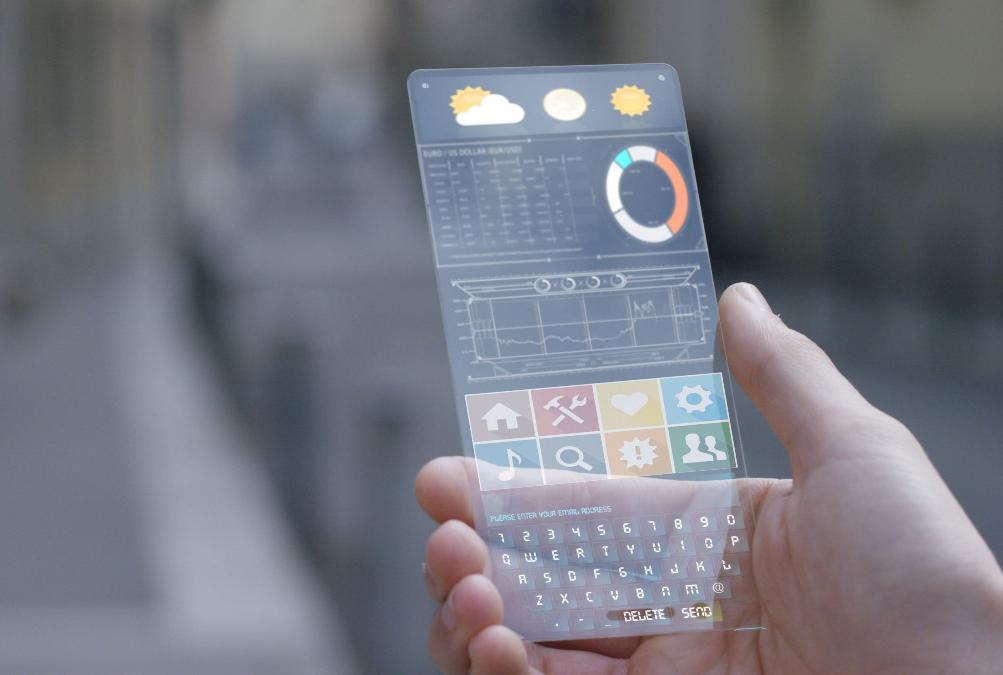Introduction:

With the constant changes in trends and techniques that dominate the sphere of mobile application promotion, storytelling to In-App Advertisement is effectively used to interest users in the app. App developers and marketers must find new and effective ways to navigate a sea of competing applications, and storytelling has emerged as an incredibly important method for doing so. This particular blog will focus on the different ways and methods which can be used to incorporate stories into your application thus improving the overall application experience of your users. In the remaining sections, the strategies for using storytelling in BA will be discussed in the features such as onboard sequences, push notifications, etc. After reading this blog till the end, you will be able to understand how best to integrate elements of storytelling to take your in-app marketing to the next level and establish your app from others.
Applying a Narrative Perspective to Ensure Engaging Onboarding Experience

Onboarding is a common type of conversion as it is the first point of contact between a user and your app, which is why this step is so important for gaining the user’s attention and anticipation of further interactions. Onboarding is a series of steps that make a user familiar with an app, and adding storytelling elements to the onboarding sequence will engage the user on an emotional level and make him interested in further usage of the app. To begin with, you can opt for a storytelling approach that complements the message of your application. It could entail proposing a character or a context familiar to the audience that you illustrated the issue your app addresses or proposing a series of screens under a theme with calls-to-action that guide users through key features of an app while telling a story. It will also be important not to write lengthy descriptions to convey your message, this can be supplemented by the use of illustrations or animations that will help to make the onboarding process less like a tutorial. When dealing with the application use story, slowly untangle the users to your application as each stage should naturally flow from the other one. The concepts of adoption and attachment within the onboarding process mean that at the end of the onboarding, the users should be not only aware of how the app works but also should have some positive attitudes towards its purposes and potential impact on their lives.
In-App Storytelling to Increase Features/Benefit Communication

After these onboarding steps are done though, there is a risk of users not being engaged and not noticing the features so storytelling elements should be incorporated during the app usage as well. One of them is storytelling, which involves developing small stories that show the application of some of the app’s features when solving practical tasks or improving the user’s life. These may be in the form of PowerPoint presentations, Flash movies, in-depth tutorials, animated clips, or even comic strips. It not only makes the application more entertaining but also ensures that people can follow explicit examples when demonstrating certain features and appreciating the possibilities in practice. Also, one can include user stories or testimonials to increase the credibility and persuasiveness of in-app marketing strategies.
How to Write Particularly Effective Push Notifications That Incorporate Narratives

Rapidly, push notifications are a very effective way of bringing back users to apps and games but if not properly implemented then they can become a nuisance or be ‘swapped’ away. The tips that are used in push notifications when you add storytelling into it will help you create useful and effective messages that users will want to open. First of all, think about the correct narrative tone of your notifications fitting to the general tone of the brand of your application. This could be provocative and silly, encouraging and uplifting, depending on the message your app is trying to convey to the users. After that, it is possible to design a sequence of interconnected notifications that unroll a story for a long time to force a user to launch an application to continue reading the next part of the story. One such technique is to incorporate elements of surprise or suspense in your notifications; this could be in the form of a hook, a question, or a partial response, which drives the user to open the application to get the complete answer. In this way, by making use of push notifications as mini-stories, you could be able to come up with a better experience of the application and this will ensure that many people continue using the app.
Leveraging User-Generated Content to Create Authentic Stories

One of the most powerful ways to incorporate storytelling into your in-app marketing is by tapping into the experiences and narratives of your users themselves. User-generated content (UGC) not only provides authentic and relatable stories but also fosters a sense of community and social proof within your app. Start by creating opportunities for users to share their own stories, experiences, and achievements within the app. This could be through dedicated sections for user testimonials, before-and-after galleries, or even a social feed where users can post updates and interact with each other. Encourage users to share their stories by offering incentives such as in-app rewards, featured placements, or even the chance to be showcased in your app’s marketing materials. When curating user-generated stories, look for diverse experiences that showcase different use cases and benefits of your app, ensuring that a wide range of potential users can find relatable content. Consider creating themed story campaigns or challenges that prompt users to share specific types of narratives, such as success stories, creative uses of your app, or personal transformations. By highlighting these user-generated stories throughout your app, you not only provide social proof and inspiration to other users but also create a more dynamic and engaging in-app experience that evolves with your user base.
Personalizing In-App Stories Based on User Behavior and Preferences

To maximize the impact of your in-app storytelling efforts, it’s crucial to tailor the narratives and content to individual users based on their behavior, preferences, and app usage patterns. By leveraging data analytics and machine learning algorithms, you can create personalized story experiences that resonate more deeply with each user. Start by segmenting your user base into distinct groups based on factors such as app usage frequency, feature preferences, and demographic information. For each segment, develop tailored story arcs or content themes that address their specific needs, goals, or pain points. For example, a fitness app might present different narratives for users focused on weight loss versus those aiming to build muscle. As users interact with your app, continuously refine and adapt the stories presented to them based on their actions and engagement patterns. This could involve adjusting the tone, pacing, or complexity of the narratives, or even introducing new characters or plotlines that align with the user’s evolving interests. Additionally, consider implementing a recommendation system that suggests relevant stories or content based on the user’s past interactions and preferences. By creating a more personalized and adaptive storytelling experience, you can increase user engagement, retention, and overall satisfaction with your app.
Storytelling Applied to App Updates, New Features, and Feature Launches

The best thing is that in-app updates and new feature releases are perfect scenarios to leverage storytelling for in-app marketing. Changes and additions should not be presented in a stereotyped typified manner always giving a list of alterations but incorporating a storyline when describing them to the users. Begin with the preparation of a powerful narrative in the creation of the new feature or update supported through the demand of users or appreciation of customers. This could include presenting the people who were involved in the creation of the update, giving small stories from the developers themselves, or even relating the update in the form of a story where the team went through a series of challenges and came out with the update. When you implement the update in your app, use a set of linked story screens where it will describe what the update adds and why it’s valuable, illustrated by using characters and situations. When we talk about major changes to the interface or layout, it may be a good idea to develop a small game or an interactive scenario into which users can be introduced to the new interface. When you communicate updates and new features as a part of a story, it is not only more effective, you make it fun as well as help to remind people about your commitment to deliver the app better and more satisfactory.
Applying the Case of Using Storytelling to Develop Brand Personality and Closeness

However, beyond the marketing goals of the advertisement, where the primary focus is often to demonstrate product features and generate interest in the brand, storytelling can be especially effective where the aim is to create a distinct brand personality and form an emotional bond with the end-users. Build a fundamental tagline that captures the purpose of the app, brand beliefs, and benefits to the consumer. The broad narrative should be the key unifying theme to your in-app marketing messages to create a consistent flow across multiple stages. As a logo, they should draw characters, either human or animal that portray the personality of the app, or use characters that are wizards or experts in the different features of the app. These characters can fit into onboarding, teaching screens, and push notifications, and can even be integrated as a part of the in-app interaction. Include an account of your company formation or the critical factors leading to the development of the application to enable users to know why you are producing such an application. Apply these brand storytelling components in a pushing manner in your app: Use them in calls to action and as notifications when an app is loading, or even as chic concealed messages that the users themselves may find. It also means that by frequently reminding users of the brand’s narrative and values in every story you share with them within your app, they become more loyal, present, emotional, active, and ready to become brand representatives.
Exploring the Actual Effect of App Storytelling among the Users and Its Influence on the Engagement and Retention

Of course, to guarantee the efficiency of narrative communications within the framework of in-app storytelling, it is necessary to apply effective measurement and analytics that would identify the impact of the changes in strategic approaches to storytelling on the target audience engagement and retention. First, you should set up goals that are going to help to achieve your storytelling goals, such as the average time spent in the app, the usage of definite features, or how many users are still using the app a week/month after installing it. Incorporate A/B testing to show you different strategies of storytelling to improve those narratives and see which one works better by using real-life data. Heat map along with a user flow analysis of delivered stories within your app will help you to define which areas are less interesting for the users or, on the opposite, they are engaged with the material. Perform/’ask’ quantitative feedback by using in-app surveys or interviews to investigate more detailed responses of the audience regarding the stories interacted and the impact caused in terms of shaping the perception of the app. This data should be reviewed and analyzed periodically to see patterns, trends, and themes for stories to be told or to improve the current strategies used. Another appealing aspect is the opportunity to rely on the results collected with the help of analytics tools to improve in-app storytelling on the go and, therefore, foster user engagement and retention.
Leveraging Augmented Reality (AR) for Immersive In-App Storytelling

As technology continues to evolve, augmented reality (AR) presents exciting new opportunities for in-app storytelling and marketing. By blending digital elements with the real world, AR allows you to create truly immersive narrative experiences that can captivate users and showcase your app’s features in unique ways. Consider developing AR-powered story elements that users can interact with in their physical environment. For example, a fitness app might use AR to project a virtual running partner into the user’s surroundings, providing motivation and guidance through a narrative-driven workout experience. An educational app could use AR to bring historical figures or scientific concepts to life, allowing users to explore and interact with them in three-dimensional space. When implementing AR storytelling, focus on creating experiences that are not only visually impressive but also add genuine value to the user’s interaction with your app. This could involve using AR to provide contextual information about real-world objects, creating virtual try-on experiences for e-commerce apps, or designing AR-powered scavenger hunts that encourage users to explore their surroundings while engaging with your app’s narrative. By leveraging AR for in-app storytelling, you can create memorable, shareable experiences that set your app apart and drive user engagement to new heights.
Utilizing Cross-Platform Storytelling for a Unified Brand Experience

In today’s multi-device world, it’s essential to create a cohesive storytelling experience that spans across various platforms and touchpoints. Cross-platform storytelling allows you to reinforce your brand narrative and engage users even when they’re not actively using your app. Start by identifying the different platforms and channels where your users interact with your brand, such as social media, email newsletters, or your company website. Develop a unified storytelling strategy that adapts your app’s core narrative to each platform while maintaining consistency in tone, characters, and overall messaging. For example, you might use Instagram Stories to share behind-the-scenes glimpses of your app’s development, Twitter to post daily micro-stories or character updates, and a blog to dive deeper into the lore and background of your app’s universe. Ensure that these cross-platform storytelling efforts always lead users back to your app, where they can experience the full, immersive narrative. Consider creating transmedia storytelling campaigns that unfold across multiple platforms, with each channel revealing a different aspect of the story and encouraging users to engage with your brand across various touchpoints. By implementing a cross-platform storytelling approach, you create a more comprehensive and engaging brand experience that reinforces your app’s narrative and keeps users connected to your brand even when they’re not actively using the app.
Incorporating User Feedback and Co-Creation in Your App’s Narrative

Engaging your users in the storytelling process can be a powerful way to foster a sense of ownership and community within your app. By incorporating user feedback and even allowing for the co-creation of narrative elements, you can create a more dynamic and user-centric storytelling experience. Start by implementing feedback mechanisms within your app that allow users to share their thoughts on the current narrative or suggest ideas for future storylines. This could be through in-app surveys, comment sections, or even dedicated forums where users can discuss and brainstorm ideas. Consider running storytelling contests or challenges where users can submit their own narrative ideas, characters, or plot twists. The winning submissions could be incorporated into your app’s official storyline, giving users a real stake in the narrative’s development. Another approach is to create branching narratives where users can vote on key plot decisions, allowing the community to collectively shape the direction of the story. When implementing user co-creation, be sure to establish clear guidelines and moderation processes to ensure that user-generated content aligns with your app’s values and overall narrative direction. By involving users in the storytelling process, you not only create a more engaging and personalized narrative experience but also foster a strong sense of community and loyalty among your user base.
Conclusion:
As we’ve explored throughout this blog, integrating storytelling into your in-app marketing strategy can significantly enhance user engagement, retention, and overall satisfaction with your app. By weaving compelling narratives throughout the user journey – from onboarding to push notifications, feature updates to brand messaging – you create a more immersive and emotionally resonant experience that sets your app apart in a crowded marketplace. The key to success lies in crafting a cohesive narrative experience that aligns with your app’s core purpose and values while remaining adaptable to individual user needs and preferences. Remember to continuously refine and optimize your storytelling efforts by leveraging user-generated content, personalization techniques, and data-driven insights. As you implement these strategies, always keep your users at the heart of your narratives, focusing on how your app’s features and benefits can genuinely improve their lives or solve their problems. By mastering the art of in-app storytelling, you’ll drive short-term engagement and foster long-term loyalty and advocacy among your user base, ultimately contributing to the sustained success and growth of your app in an increasingly competitive digital landscape.







